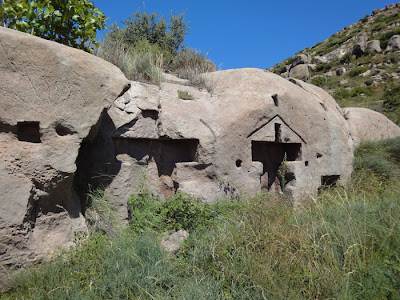 "All Fools' Day" is a post-apocalyptic science fiction novel by the English writer Edmund Cooper. It was already published in 1966, meaning in the good old days of post-apocalyptic fiction. There was no atomic blast and Cooper is really enjoying the scenery when great parts of humanity have vanished.
"All Fools' Day" is a post-apocalyptic science fiction novel by the English writer Edmund Cooper. It was already published in 1966, meaning in the good old days of post-apocalyptic fiction. There was no atomic blast and Cooper is really enjoying the scenery when great parts of humanity have vanished.It has happened in a nearly comfortable manner. Because of the strange radiation from sun-spots suicide became endemic. Nearly all normal people decided happily to end their lives, only the psychopaths and eccentrics were imune and left.
So it’s a kind of Road Warrior in Great Britain, nice to read at least for all, who are interested in the roots of the genre.













